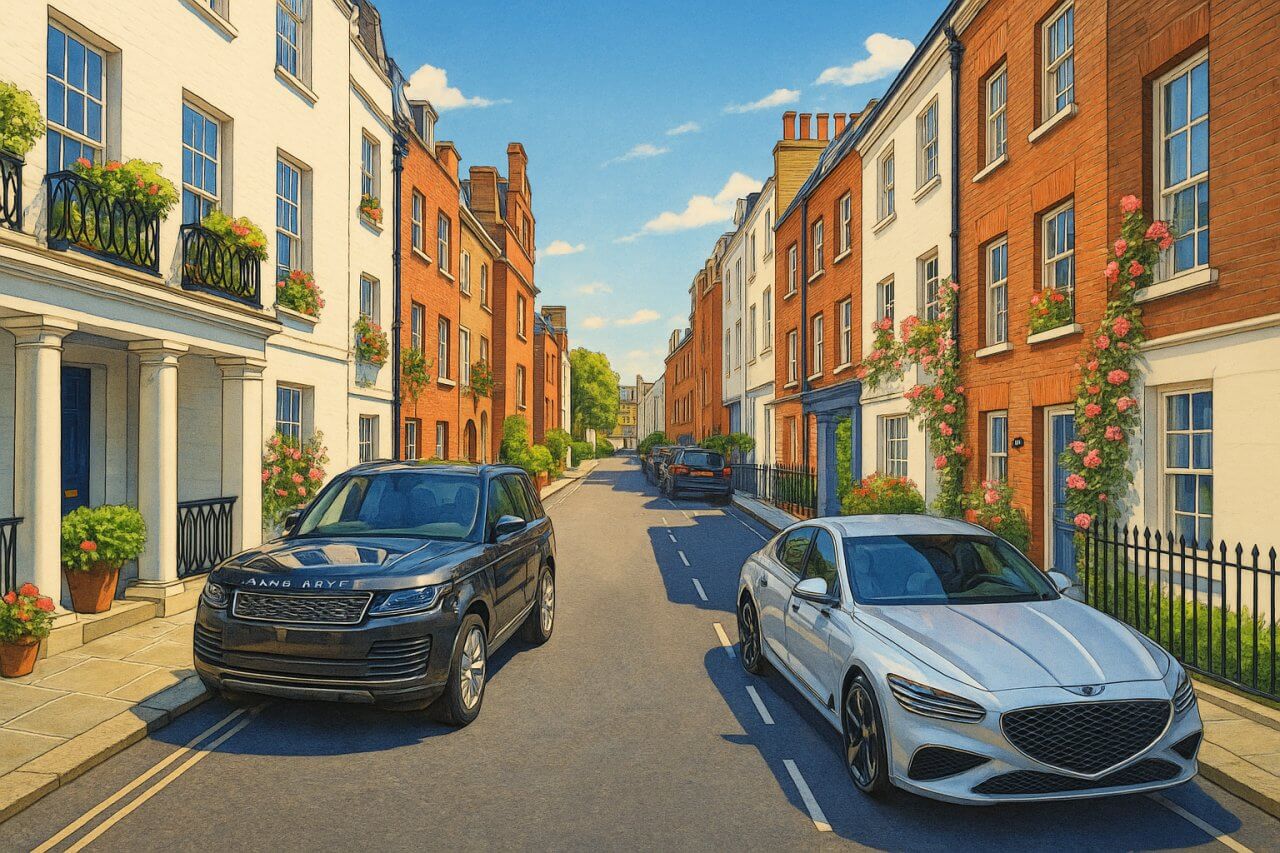
Culross Street, London
Culross Street is a short, exclusive residential street in the heart of Mayfair, part of the City of Westminster, London. Once forming a continuous east-west route between Park Lane and Blackburne's Mews, the street has since been truncated, split into two disconnected sections due to pedestrianisation works at Park Street. Today, Culross Street is a quiet retreat in central London, known for its historic architecture, privacy, and premium real estate.
Layout and Surroundings
Culross Street originally connected Park Lane on its western end to Blackburne's Mews on its eastern side. Park Street intersects it approximately at the midpoint. However, the eastern section was closed off to vehicles in the 21st century, and is now a cul-de-sac accessible only via Blackburne’s Mews. The western section remains open to traffic and connects Park Lane to Park Street.
The surrounding area is quintessentially Mayfair: tree-lined streets, elegant Georgian facades, and luxury residences dominate the view. Nearby streets include Upper Grosvenor Street, South Street, and Mount Street, all sharing the refined residential tone of the neighbourhood.
Historical Background
Culross Street was laid out during the late 18th and early 19th centuries as part of the expansion of Mayfair into a residential area for the wealthy. Like much of Mayfair, its development followed the breakup of the Grosvenor family estate lands into residential plots, intended for aristocratic Londoners seeking elegant city dwellings.
Origin of the Name
The name "Culross" is believed to derive from the Scottish town of Culross in Fife, possibly named by a developer or landowner with Scottish heritage or connections. Though the exact naming date is not firmly documented, the name was already in use by the early 19th century and fits the period’s trend of naming Mayfair streets after locations in Britain or prominent families.
Architecture and Character
Culross Street today maintains much of its early charm. Houses here are predominantly Georgian-style townhouses, many of which have been lovingly restored or modernised internally while retaining their historic façades. The street exudes exclusivity, aided by its limited access and relative seclusion from Mayfair’s more commercial parts.
Several of the properties have off-street parking and are finished to high interior specifications. Gardens or courtyards are rare, but the leafy surroundings and proximity to open spaces compensate amply.
Points of Interest Nearby
While Culross Street itself is purely residential, it benefits from its location in one of London's most culturally rich neighbourhoods. A short walk leads to Hyde Park and Green Park, while the boutiques of Mount Street and fine dining at Scott’s and The Connaught are just around the corner.
- Grosvenor Square – Former site of the American Embassy, now being redeveloped into luxury residences and a hotel.
- The Dorchester – One of London’s most prestigious hotels, just around the corner on Park Lane.
- Mount Street Gardens – A peaceful public garden perfect for a quiet break.
Real Estate and Living Standards
As of mid-2025, property prices on Culross Street reflect the exclusivity of the address. A refurbished 5-bedroom townhouse of approximately 4,000 sq ft (372 sq m) is likely to command upwards of £15 million, depending on specification and position on the street. Smaller properties, where available, also fetch premium rates due to the quiet, central location. By contrast, the average London property across all boroughs stands at approximately £530,0001, highlighting the gulf between prime Mayfair and the wider city.
These properties are typically owned by high-net-worth individuals and international buyers, many of whom use them as part-time or investment residences.
Transport and Accessibility
Nearest London Underground Stations
- Marble Arch Station (Central Line) – Approximately 7 minutes' walk north.
- Green Park Station (Jubilee, Piccadilly, and Victoria Lines) – 10 minutes east on foot.
- Hyde Park Corner Station (Piccadilly Line) – Also reachable within 10 minutes to the south-west.
All three stations provide access to key routes across the capital and connect seamlessly with the wider London Underground network. For a full overview of stations in the area, see our page on London Underground Stations.
Bus Services
The nearest bus stops are located on Park Lane and Oxford Street. Routes serving these stops include:
- Route 73 (towards Stoke Newington or Victoria)
- Route 390 (towards Archway or Victoria)
- Route 10 (towards King’s Cross or Hammersmith)
These provide convenient surface access through central and west London.
Fun Fact
Despite its modest size and quiet presence, Culross Street has occasionally featured in celebrity property stories and luxury lifestyle magazines. Some houses on the street have even been rented by high-profile individuals seeking discretion and elegance in central London.
Quick Facts
- Location: Mayfair, City of Westminster, London
- Original layout: Park Lane (west) to Blackburne’s Mews (east), intersected by Park Street
- Current layout: Two disjointed sections due to pedestrianisation at Park Street
- Street type: Primarily residential with Georgian-style homes
- Nearby sights: Hyde Park, Grosvenor Square, Mount Street Gardens
- Property prices: Around £15 million for a 4,000 sq ft (372 sq m) townhouse (as of mid-2025)
- Underground stations: Marble Arch, Green Park, Hyde Park Corner
- Nearby bus routes: 10, 73, 390
- Fun fact: Has been discreetly used by celebrities and foreign dignitaries for temporary stays
References
Map of Culross Street, London
 Painting of Culross Street, London
Painting of Culross Street, London